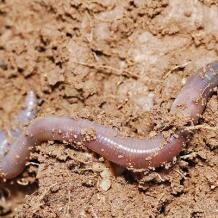Topic: Myelinated nerves in vertebrates, annelids and crustaceans
Myelinated nerves are an excellent biological solution and needless to say have evolved independently in several groups other than vertebrates. In each case myelination is associated with very rapid nervous conduction and often escape reactions.
Myelin in the vertebrate nervous system
In the vertebrates the nerves are typically encased in fatty sheaths of myelin, interrupted at various points by areas free of myelin and known as the nodes of Ranvier. The myelin insulates the nerve fibre and greatly accelerates the propagation of nervous impulses, while the nodes of Ranvier are rich in ion channels, especially the sodium voltage-gated ion channels, that serve to propagate the signal by action potentials.  It is an excellent biological solution and needless to say has evolved independently in several other groups. In each case it is associated with very rapid nervous conduction and often escape reactions.
It is an excellent biological solution and needless to say has evolved independently in several other groups. In each case it is associated with very rapid nervous conduction and often escape reactions.
Myelin in earthworms
In the terrestrial earthworm (an annelid) the giant fibres are myelinated. The myelin sheath is arranged in a spiral wrap, and thus is like that seen in the vertebrates. In contrast, however, some cytoplasm (and desmosome-like structures) occurs within the sheath, and they also have so-called dorsal nodes that are strikingly similar to the nodes of Ranvier.
Myelinated nerves in arthropods
Within the crustaceans several groups (copepods, prawns and snapping shrimp) have evolved myelinated nerves and although apparently never subject to any phylogenetic analysis, these are almost certainly independent.
(a) Copepods
Best known for myelinated nerves are examples in the copepods, where they evidently mediate extremely fast escape reactions. Not all copepods, however, have myelin and it seems to be especially characteristic of those species living in the open ocean. These belong to more derived groups, and this too supports the independent origin of the myelinated nerve sheaths. The arrangement of the myelin is similar to that seen in vertebrates (although concentric rather than spiral), and there are also fenestration structures directly comparable to the nodes of Ranvier. Interestingly although the remarkably fast escape reactions of the copepods is correlated with the possession of myelin, in fact relatives without myelin compare favourably. So maybe there isn’t a correlation? In fact the principle still holds because these latter copepods usually have very large axons. This is an alternative strategy to myelination and such giant axons are, of course, convergent. There are, moreover, arguments connected to energetics and conservation of energy, especially where food is limited, to suggest myelin confers a definite advantage.
 (b) Prawns
(b) Prawns
Prawns, again famous for rapid reactions, have myelinated nerves capable of very high conduction speeds. The myelin sheath is concentric, but it contains cytoplasm and even cell nuclei. In addition, fenestration nodes directly recall the nodes of Ranvier. Some shrimps also show an interesting combination of features because the submyelin space is filled with an electrolytic gel that evidently also assists conduction and increases the effective diameter of the axon: in effect it serves as both a myelinated and giant axon.
(c) Snapping shrimp
In the snapping shrimps (e.g. alpheids), which are also instructive in the independent evolution of eusociality and even cavitation, the very fast action of the snapping claw is, unsurprisingly, mediated by myelinated nerves.
Cite this web page
Map of Life - "Myelinated nerves in vertebrates, annelids and crustaceans"
https://mapoflife.org/topics/topic_423_myelinated-nerves-in-vertebrates-annelids-and-crustaceans/
March 3, 2021

